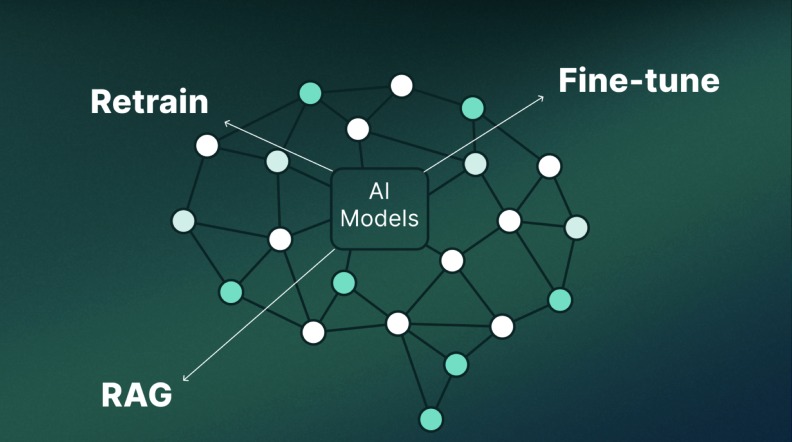Few-Shot Learning vs Fine Tuning: Unveiling the Power of Machine Learning With Minimal Data






In the rapidly evolving realm of machine learning, two approaches have risen as game-changers for tasks involving minimal data: few-shot learning and fine tuning. These methodologies empower models to learn from a limited dataset, breaking the traditional barriers that required vast amounts of data. This comparison sheds light on how each method leverages small data sets to achieve remarkable results, setting the stage for a new era of machine learning efficiency and versatility.
Few-shot learning specializes in learning from very few examples, sometimes as little as one or two, to make accurate predictions or classifications. This approach mimics human learning capabilities, making it a fascinating study in the field of artificial intelligence. On the other hand, fine tuning involves adjusting a pre-trained model on a new, albeit related, task using a relatively small dataset. This method capitalizes on the knowledge the model has already acquired, applying it to new problems with minimal additional training.
Understanding these two strategies is crucial for selecting the right approach for machine learning projects, especially when data is scarce. Each has its unique strengths and applications, influencing how projects are initiated and executed. The comparison between few-shot learning and fine tuning not only highlights the versatility of machine learning strategies in dealing with limited data but also underscores the rapid advancements in AI that make such feats possible.
Understanding the Core Concepts
At the heart of few-shot learning and fine tuning lies the ability to leverage minimal data for learning. Few-shot learning achieves this by utilizing very few examples to teach a model a new task. In contrast, fine tuning adapts a pre-existing model, trained on a large dataset, to perform a new task with a much smaller dataset. These core concepts represent the cutting edge of machine learning, showcasing how models can be made efficient and adaptable.
Few-Shot Learning: A Glimpse Into Efficiency
Few-shot learning stands out for its ability to learn quickly from a minimal number of examples. This method is closely related to zero-shot learning, where a model makes predictions for tasks it has not explicitly been trained on. Few-shot learning, however, requires a handful of examples to guide the learning process, making it a bridge between traditional machine learning and the ambitious goal of zero-shot learning.
How It Works
Few-shot learning operates by training a model on a large dataset to learn a general understanding of a task. Then, it applies this understanding to a new task using only a few examples. This is often achieved through techniques like meta-learning, where the model learns how to learn, allowing it to apply its knowledge to new, unseen tasks with minimal data input.
Pros
The main advantage of few-shot learning is its efficiency in learning from limited data, making it ideal for tasks where data collection is challenging or expensive. It also opens the door to more personalized applications, as models can adapt to new tasks quickly and with fewer examples. Furthermore, few-shot learning can accelerate the development cycle of machine learning models by reducing the need for large datasets.
Cons
However, few-shot learning comes with challenges, such as the risk of overfitting due to the small size of the training set. Ensuring the model’s generalization capabilities can be difficult, and the success of few-shot learning heavily depends on the quality and relevance of the few examples provided. Additionally, designing models capable of effectively learning from few examples requires sophisticated algorithms and techniques.
Fine Tuning: Leveraging Existing Models for New Tasks
Fine tuning takes a different approach by modifying a pre-trained model to perform a new task. This method is particularly effective when the new task is related to the original task the model was trained on. By adjusting the model’s parameters slightly, fine tuning can leverage the vast knowledge the model has already acquired, applying it efficiently to new problems.
How It Works
To fine-tune a model, the initial layers (which capture general features) are typically kept unchanged, while the latter layers (which focus on specific tasks) are adjusted for the new task. This process involves continuing the training of the model on a new dataset, allowing the model to adapt its learned features to new data. Generative AI models, for instance, can be fine-tuned to generate new types of content based on a small set of examples provided in the new dataset.
Pros
One of the major benefits of fine tuning is the ability to capitalize on the comprehensive learning a model has undergone during its initial training. This can significantly reduce the time and resources needed to develop a model for a new task. Additionally, fine tuning can improve model performance on specific tasks by tailoring the model more closely to the nuances of the new data.
Cons
Despite its advantages, fine tuning faces challenges such as the potential for catastrophic forgetting, where the model loses its ability to perform the original task after being fine-tuned for a new task. There is also a risk of overfitting, especially if the new dataset is too small or not representative enough of the task at hand. Balancing the model’s generalization and specialization is key to successful fine tuning.
Practical Applications and Examples
Few-shot learning and fine tuning have found applications across various industries, revolutionizing how tasks are approached with limited data. From enhancing natural language processing systems to improving image recognition and beyond, these methods are driving innovation and efficiency. By allowing models to learn from fewer examples or adapt pre-learned knowledge to new tasks, they support the development of more flexible and responsive AI systems.
Transforming Industries With Few-Shot Learning
Few-shot learning is making significant impacts in fields such as healthcare, where it enables quick adaptation to new diseases or patient data. In robotics, it allows machines to learn new tasks with minimal examples, enhancing their utility. The technology is also transforming customer service with chatbots that can understand and respond to a wider array of queries after being trained on a small dataset.
Fine Tuning in Action: Real-World Success Stories
Fine tuning has enabled significant advancements in sectors like entertainment, where generative AI models are adapted to create new content styles. In the realm of autonomous vehicles, fine tuning allows models to better understand specific geographic regions or driving conditions by adjusting to local data. This adaptability ensures that AI technologies remain at the forefront of innovation, meeting diverse needs across industries.
The Technical Journey: From Theory to Implementation
Transitioning from understanding few-shot learning and fine tuning to implementing these methods requires a blend of theoretical knowledge and practical skills. By navigating the intricacies of model training, dataset preparation, and algorithm optimization, developers can turn the concepts of efficient learning with minimal data into reality. This journey is crucial for harnessing the full potential of machine learning in applications where data is scarce or tasks are constantly evolving.
Setting Up Your First Few-Shot Learning Experiment
Initiating a few-shot learning experiment involves selecting a suitable model, preparing a dataset with a very limited number of examples, and employing techniques such as meta-learning to train the model. This process, while challenging, offers a rewarding opportunity to explore the capabilities of AI when constrained by data availability. By carefully crafting the experiment, one can uncover the potential of few-shot learning to address specific tasks with unprecedented efficiency.
Steps to Successfully Fine-Tune a Pre-Trained Model
To fine-tune a pre-trained model effectively, one must first select a model that closely aligns with their new task. Next, adjusting the model’s final layers to suit the specific needs of the task at hand is crucial. This is followed by training the model on a smaller, task-specific dataset, allowing it to learn new patterns while retaining previously acquired knowledge. Careful monitoring of the learning rate is essential to avoid overfitting, ensuring that the model adapts to new data without losing its generalizability.
Navigating Challenges and Solutions
When navigating the challenges of few-shot learning and fine-tuning, practitioners encounter issues like data scarcity and model overfitting. Strategies to overcome these include leveraging synthetic data, employing regularization techniques, and applying transfer learning principles judiciously. Additionally, iterative testing and validation help in fine-tuning model parameters effectively. Solutions revolve around creatively maximizing the utility of limited data and exploiting pre-trained models’ inherent knowledge.
Browse Other Questions Tagged With Few-Shot Learning
Exploring questions related to few-shot learning reveals common inquiries about optimizing model performance with minimal data, selecting appropriate algorithms, and understanding the impact of various hyperparameters. Community forums and academic databases serve as rich resources for finding solutions to these challenges, offering insights from real-world projects and cutting-edge research. Engaging with these discussions can significantly enhance one’s understanding and application of few-shot learning techniques.
Network Questions: Addressing Common Concerns in Fine Tuning
Within the realm of fine-tuning, common concerns include determining the optimal amount of data for retraining, identifying the most effective layers to adjust, and mitigating the risk of model degradation over time. Addressing these concerns often involves experimenting with different fine-tuning strategies, such as incremental learning and careful adjustment of learning rates. Peer forums and specialized workshops offer practical advice and case studies that can guide practitioners through the fine-tuning process.
Beyond the Basics: Future Directions and Conclusion
The future of machine learning promises advancements in generative AI, prompt engineering, and zero-shot learning, pushing the boundaries of what’s possible with limited data. Innovations in training dataset curation and optimization techniques will further refine the efficiency of training models. As artificial intelligence continues to evolve, the interplay between few-shot learning, fine-tuning, and emerging technologies will shape novel applications, transforming industries and expanding the frontiers of knowledge.
The Evolving Landscape of Machine Learning: What’s Next for Few-Shot Learning and Fine Tuning?
As machine learning progresses, few-shot learning and fine-tuning are set to become even more sophisticated. Advances in artificial intelligence will lead to more robust models capable of learning from limited data. The development of novel training datasets and the refinement of prompt engineering strategies will enhance the ability to train models more efficiently. This evolution will empower researchers and practitioners to tackle more complex challenges, heralding a new era of innovation in machine learning.